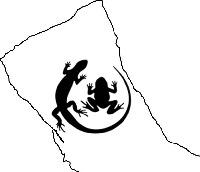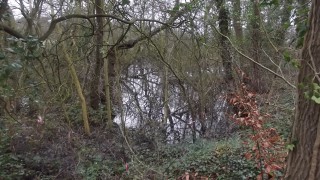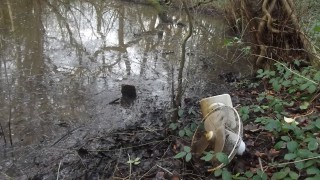About us
About Us
Aim
The aim of this group is to understand and protect the amphibians and reptiles of the Wirral peninsular through organizing training, raising awareness, surveys, habitat management tasks and other conservation activities.
Background
The Wirral Peninsular has historically been habitat of Sand Lizard, Natterjack, Great Crested Newt, Common Frog, Common Toad, Smooth Newt, Palmate Newt, Common Lizard, Slow Worm and Grass Snake. However, developments in the 20th Century has seen species such as the Sand Lizard and Natterjack disappear. Status of other herps have been uncertain, the problem being linked to lack of surveys and recording.
In 2018, preliminary surveys around Wallasey revealed many new and surprising records for amphibians and reptiles. This was part of the Cheshire & Wirral ARG. However, the size of this district with that county was too large, necessitating the formation of a new ARG for Wirral (WiARG) so more surveys and recording can be coordinated across this interesting peninsular.
Founding member and current Chair of WiARG, Tom Doherty-Bone, grew up on the Wirral and was frustrated by the lost herpetofauna species and limited opportunities to view the remaining herps in the area. Formation of this new ARG will create the opportunity for local residents in the Wirral to get involved with amphibian and reptile surveys and recording for both enjoyment of these wonderful animals and to aid in their conservation on the Wirral.
Activities
Since its formation in 2019, WiARG has undertaken numerous surveys and practical conservation tasks across the Wirral. Some of the highlights have been mapping out the extent of Common Lizard in Harrison Park, Wallasey, as well as lizards and amphibians across the North Wirral Coastal Park. Updating the known status of amphibians (including Great Crested Newt) at Royden Park and more recently measuring the use of the tidal zone of amphibians in the north west Wirral coast.
An outline itinerary for 2023-24 can be found under the 'Upcoming surveys' tab, suggestions from members are welcomed.
Existing partnerships include the Wirral Ranger Service, Cheshire Wildlife Trust, the Friends of the North Wirral Coastal Park and Wirral Wildlife.
Committee
The present committee consists of: Thomas Doherty-Bone (chair); Sue Noyce (secretary); Jon Bielby (vice chair); Frankie Bielby (treasurer); Charles Mulryan (general committee); Mike Brown (senior adviser).
Membership
The membership fee for 2023-24 is £5 (£2.50 for under 17s when accompanied by a guardian), which goes toward conservation activities of the group, such as buying equipment. Payment can either be made in cash, bank transfer or through Paypal: https://paypal.me/WiARG?locale.x=en_GB
Membership cycle runs from April to April.
Please get in contact if you wish to get involved.
News
News
Starting on a new pond at Royden Park
Last Saturday a small group of us (three, incl. ranger Rosemary) started to clear the trees shading the pond across the entry road to the park. We were joined by Toby for an hour as part of his Duke of Edinburgh Award. As a lot of the work was cutting up the brush and branches and turning them into a hibernaculum, and there is an observable difference in the pond. There is still more to be done, so we will be back again on the following Saturday (1st Feb) to keep at this and get more done. The more who can help the better as we need to make as big impact as possible before amphibians start moving to the ponds for breeding season. There will also be a task day on Tuesday the 11th February.
Red Rock Scrub Clearance Day
On the 7th January, we met with the Cheshire Wildlife Trust (CWT) on Red Rocks Nature Reserve, Hoylake-West Kirby to do some terrestrial habitat management. We removed woody vegetation encroaching on both sand dunes where Natterjack and Common Lizard bask, forage and over-winter, and on ponds where Natterjack and other amphibians breed. The brush was turned into wood chip by the grounds staff of the Royal Liverpool Golf Course, who actually own the land of Red Rock. Red Rock is a Site of Special Scientific Interest (SSSI) and so the CWT manage it on the golf course's behalf to ensure compliance. There is still plenty of work to be done (invasive sea buckthorn is starting to pop up) and we will be back on Sunday the 1st February to do more bits, including on the Natterjack ponds.


Paypal set up to pay membership fees
We have set up our bank account and membership subs can now be paid via PayPal at paypal.me/WiARG
As a reminder, its £5 per year, renewal April.
We plan to use member subs for equipment, other expenses for surveys, outreach and maybe socials and day trips to other places.
End of 2019 - share your records on the ARG's Record Pool
We are rapidly seeing the end of 2019. I want to try something:
For all the herps you've seen around the Wirral, whether you've seen them with us or out and about, make sure to share this information on the ARG-UK's Record Pool. I am pleased to say when I have done this, it efficiently gets transcribed to the National Biodiversity Network and provides the crucial information for conserving our natural heritage. If you do share your findings, drop me an email (tommy_dbone@yahoo.com) so I can have a "see Smither's, I told him to do that" moment, but also to quantify the value of members sharing their own findings to this.
The website to do this is here https://www.recordpool.org.uk/index.php?option=com_records&view=records&layout=survey and if you need any help with how to enter your findings (species ID, georeferencing).
Tom
Herpetofauna Workers Meeting weekend of 15th-16 February 2020
The Herpetofauna Workers Meeting is an annual conference organised by the Amphibian & Reptile Groups UK and the Amphibian & Reptile Conservation Trust, bringing together people interested in and working with these wonderful animals across the British Isles and sometimes further afield.
This meeting usually includes workshops on issues such as eDNA surveys for Great Crested Newt or restoration options for ponds in farmland. These are accompanied by numerous talks by a range of specialists in their fields, from government to NGO to consultants. One example is how useful they are is in 2017 Dr Carl Sayer and Helen Greaves gave talks and workshops on farm pond management, which provided the background to enable the present WiARG project in Royden Park. They are a great opportunity to meet knowledgeable and experienced people in the field, who are likely to be like-minded people. There is also a social element where people
This year it will be in Southport in the county across from the Wirral, where the North Merseyside Amphibian & Reptile Group often operates in its efforts to conserve Sand Lizards and Natterjack Toad. There will be a guided walk around the nearby sand dune system were much habitat management takes place. There will be two talks on the work around the Sefton coast that have relevance to the Wirral, from Andy Hampson from Gems in the Dunes, and Dr Phil Smith who is a former lecturer who has made a career of researching the Sefton Coast. There will also be posters presented, including one from WiARG on the reptile surveys in the north east Wirral coast.
Members of any ARG are given a subsidised fee for attendance, so make sure your subs are up to date (paypal.me/WiARG).
The chair (Tom) will be getting the train up for each day from the Wirral, so get in touch if you are looking for a travel companion.
Committee Members
Committee Members

Upcoming Surveys
Upcoming Surveys
There are multiple surveys planned for Friday 24th May at Central Park, Birkenhead Park and Prenton Dell.
Each survey will consist of setting traps and torching ponds on Friday, then returning early on Saturday morning in order to empty the traps and record what's there. As with all surveys, appropriate clothing, water-proof shoes/boots and torches will be useful.
Please use the "check-clean-dry" technique with your outdoor gear for biosecurity. Likewise, if you keep amphibians and reptiles at home, probably use separate clothes if you have been handling or servicing them to save spreading exotic pathogens around.
Let us know if you are planning to attend.
Photo gallery
Photo Gallery
Upcoming Events
Upcoming events will be listed here.
Latest News
- 2024 activities in more detail
27/03/2025 12:35 pm - 2024 - A summary of a busy year
27/03/2025 12:19 pm - Notice of Annual General Meeting and Survey Training Session Sat 25th November Royden Park
28/10/2023 10:46 am - Grass Snake Reports in Ellesmere Port
04/05/2023 3:25 pm - WiARG AGM 12/12/22
06/03/2023 9:57 pm
© Wirral ARG (WiARG)
Website hits: 18354
View All | Find out how to get a mini-website for your ARG
© ARG UK Local Groups mini-websites 2025
Wind powered websites by Aye-aye Design.





